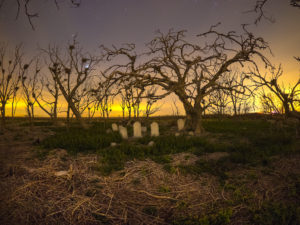I recently saw a documentary on Dorchester County (Maryland Eastern Shore) and how sea level rise has impacted it. The Blackwater National Wildlife Refuge, established in 1933, contains 45% of
Maryland’s tidal wetlands and brings in $27 million a year in tourist dollars to Dorchester County. These wetlands are being threatened by sea level rise. Due to flooding, farmers will need to change to more salt resistant crops. Residents have had to move or build berms, dikes, or walls to protect houses. Nuisance flooding is a problem for tourists as well as the people who live there, affecting businesses and events such as the Iron Man Triathalon.
It is expected that sea level around the Chesapeake will be 2.5 feet higher by 2050 and 5-6 feet higher by the end of the century. Sea level rise is drowning forests – healthy upland forest habitat has converted to tidal marsh; tidal marsh floods drown out tidal marsh plants, and eventually the marshes convert to open water. Salisbury University comparing aerial footage of the refuge from 1938 and 2006 found 5000 acres of intertidal marsh had converted to open water in those 68 years. It’s not just marsh to water; sea level rise has drowned forest habitat, which has converted to marshes, leaving standing dead trees. Farmers have had to adapt from salt water intrusion and have converted from corn and soy beans to more salt resistant crops, wheat and sorghum. A few inches of sea level rise in the bay will go inland hundreds of yards.
So, what does this have to do with forestry? The 2003 storm surge from Isabel brought in salt water which eventually poisons the hardwoods and kills off the pines. Then the forest canopy thins out, allowing more sunlight which should encourage understory species, however, those species that are adaptive to grow with the increased sunlight cannot handle the salt, thereby allowing invasive species (phragmites) to flourish. Salt marshes are important to the environment because they act as a buffer and take energy out of storm surges. This loss of forests is not unique to the Chesapeake Bay. University of Florida researchers have been investigating this same forest decline and salt marsh replacement since the mid 1990s , and New Jersey has a similar issue with salt water creeping inland, converting forest to marsh. — Llody Chesley




